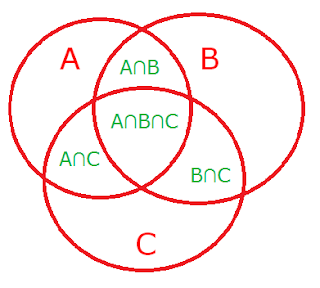Sets and Venn Diagrams
Sets and Venn Diagrams
The relationship between sets can be represented by diagrams is known as Venn Diagrams.
In venn diagrams,
1. A rectangle is represent a universal set.
2. Circles or ovals are represent other subsets of the universal set.
Example: The set of Natural numbers is a subset of set of Whole numbers, which is a subset of Integers.
The set of Natural numbers is N, set of Whole numbers is W and set of Integers is Z
let’s see above example in venn diagram,

Example: Let U = {a, b c, d, e, f, g, h} and A = {e, f, g, h}, in this example set U is the universal set, and set A is a subset.
we see these sets in venn diagram
Example: Let U = {a,b,c,d,e,f,g,} and A = {e,f,g,}, in this example set U is the universal set, and set A is a subset.
we see these sets in venn diagram
Example: Let U = {a, b, c, d, e, f, g, h, i, j} and A = {e, f, g, h}, in this example set U is the universal set, and set A is a subset.
we see these sets in venn diagram
A∪B
A∩B
Venn diagram in three sets, A, B and C.
Venn diagram in two sets, A and B.
In above figure, Set A belongs element a, Set B belongs element c, Set A and set B both belongs element b,
(A∩B), m is the element belong None of sets A and B both.
∴ n(A) = a + b,
n(B) = b + c
n(A∩B) = b
n(A∪B) = a + b + c
Total number of elements = a + b + c + m
(B∪C)
A∩C
B∩C
A∪B
A∩B

Here are some basic formulas for venn diagram of two and three elements.
1. n(A∪B) = n(A) + n(B) – n(A∩B)
2. n(A∪B∪C) = n(A) + n(B) + n(C) – n(A∩B) – n(B∩C) – n(C∩A) + n(A∩B∩C)










